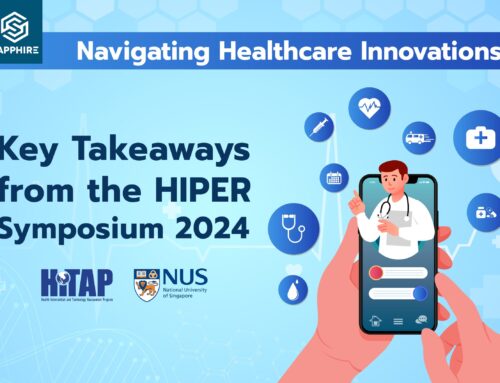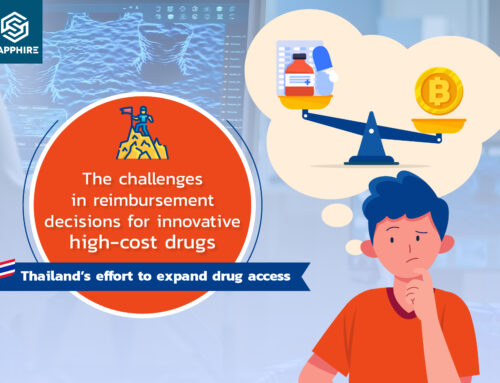Post-graduation from Gavi support in 2016, the Bhutan Health Trust Fund took up investment for vaccine provision in the country according to its mandate. The Fund also aims to “eliminate financing uncertainties for priority core components of the Primary Health Care Services out of the income generated from the investment of the Fund” and “achieve self-reliance in the Primary Health Care Sector (Bhutan Health Trust Fund, 23 December 2018.” With this and other changes in the country, Bhutan has been improving its systems and capacity to conduct HTA to ensure that their resource allocation and decisions are value-for-money and evidence-informed. The Essential Medicines and Technologies Division (EMTD) under the Department of Medical Services of the Bhutanese Ministry of Health has been performing this function. With support from Health Intervention and Technology Assessment Program (HITAP), International Decision Support Initiative (iDSI), and the World Health Organization (WHO), the Division conducted the pneumococcal conjugate vaccine (PCV) economic evaluation in 2016-2017 (1), which resulted in the inclusion of the vaccine in the national immunization programme in 2018 (Pneumococcal Conjugate Vaccines Now Introduced in Bhutan, 23 December 2018).
Following this successful study, Bhutan’s High Level Committee is beginning to explore the use of HTA for their decision-making on interventions. They have turned their attention to address diarrhea, which is one of the major disease burdens in the country, especially for children under five years of age (2). Rotavirus has been shown as the leading cause of diarrhea (3-9). To address this, they commissioned the EMTD to conduct an economic evaluation of the rotavirus vaccine, which has been shown as effective and good value-for-money in many settings, now implemented in 96 low-and-middle income countries as of 2018. However, there are several products in the market and the government seeks to introduce the best, most appropriate option for Bhutan.
With the EMTD requesting support, a team from HITAP, the Mahidol Oxford Tropical Unit (MORU), and PATH are collaborating with the EMTD team to conduct a 6-month economic evaluation study for inclusion of the rotavirus vaccine in the Bhutan’s national immunization programme. The study is supported through both iDSI and PATH. The study will evaluate the cost-effectiveness of RotaTeq, Rotarix, ROTAVAC, and ROTASIIL using ProVac’s UNIVAC model as well as the corresponding budget impact and human health resource needs (10). A stakeholder consultation meeting for the proposal was conducted on December 14, 2018, in Thimphu, with a positive and supportive reception from the stakeholders.
This study will provide stakeholders and decision-makers with an understanding of the most cost-effective option for Bhutan, with the possibility of exploring the price at which the country can afford to pay for the vaccine. While Gavi’s access price is still currently used for the current programmes, the transition process may prompt changes to this in the future, making this information crucial for the Bhutan Health Trust Fund. Encouragingly, the Fund and the Bhutanese Ministry of Health are also matching the support from external partners to provide technical assistance with their funding to the EMTD for the study, showing strong commitment to ensure that decisions are made rationally.
While many countries, like Bhutan, are starting to use economic evaluation for new vaccines, this begs the question on whether the vaccines currently in national implementation programmes are also affordable at the market price. With governments on track to transitioning from Gavi support, value-for-money evidence of Gavi vaccine investments is increasingly examined, especially in terms of their sustainability post-Gavi support (11). While Gavi programs have contributed immensely to the infrastructure and human resource development and access to medicines in their partner countries, future programs could benefit from incorporating lessons-learned from those that are currently in the transition phase.
References:
- Dorji K, Phuntsho S, Pempa, Kumluang S, Khuntha S, Kulpeng W, et al. Towards the introduction of pneumococcal conjugate vaccines in Bhutan: A cost-utility analysis to determine the optimal policy option. Vaccine [Internet]. 2018;36(13):1757–65. Available from: https://doi.org/10.1016/j.vaccine.2018.02.048
- Wangchuk S, Dorji T, Tsheten, Tshering K, Zangmo S, Pem Tshering K, et al. A Prospective Hospital-based Surveillance to Estimate Rotavirus Disease Burden in Bhutanese Children under 5 Years of Age. Trop Med Health [Internet]. 2015;43(1):63–8. Available from: https://www.jstage.jst.go.jp/article/tmh/43/1/43_2014-22/_article
- Poovorawan Y. Cost-Effectiveness of Rotavirus Vaccination As Part of the National Immunization. 2014;41(January 2010).
- Anwari P, Debellut F, Pecenka C, Parwiz SM, Clark A, Groman D, et al. Potential impact and cost-effectiveness of rotavirus vaccination in Afghanistan. Vaccine [Internet]. 2017; Available from: https://linkinghub.elsevier.com/retrieve/pii/S0264410X17314664%0Ahttp://www.ncbi.nlm.nih.gov/pubmed/29107346
- Pecenka C, Debellut F, Bar-Zeev N, Anwari P, Nonvignon J, Shamsuzzaman M, et al. Re-evaluating the cost and cost-effectiveness of rotavirus vaccination in Bangladesh, Ghana, and Malawi: A comparison of three rotavirus vaccines. Vaccine [Internet]. 2018;36(49):7472–8. Available from: https://doi.org/10.1016/j.vaccine.2018.10.068
- Rose J, Homa L, Meropol SB, Debanne SM, Bielefeld R, Hoyen C, et al. Health impact and cost-effectiveness of a domestically-produced rotavirus vaccine in India: A model based analysis. PLoS One. 2017;12(11):1–16.
- Kotirum S, Vutipongsatorn N, Kongpakwattana K, Hutubessy R, Chaiyakunapruk N. Global economic evaluations of rotavirus vaccines: A systematic review. Vaccine [Internet]. 2017;35(26):3364–86. Available from: http://dx.doi.org/10.1016/j.vaccine.2017.04.051
- Vo NX, Quang Vo T, Nguyen HTS, Van Ha T. The Economic Evaluation in Vaccines – A Systematic Review in Vietnam Situation. Syst Rev Pharm [Internet]. 2018;9(1):1–5. Available from: http://www.sysrevpharm.org/article/121
- Clark A, Jauregui B, Griffiths U, Janusz CB, Bolaños-Sierra B, Hajjeh R, et al. TRIVAC decision-support model for evaluating the cost-effectiveness of Haemophilus influenzae type b, pneumococcal and rotavirus vaccination. Vaccine. 2013;31(SUPPL.3):15–7.
- Jauregui, et al. ProVac Global Initiative: a vision shaped by ten years of supporting evidence-based policy decisions. Vaccine, 33 (supplement) (2015), p. 1
- Kaniprom, K., Luz, A. C. G., Chalkidou, K., & Teerawattananon, Y. How Should Global Fund Use Value-for-Money Information to Sustain its Investments in Graduating Countries? Int J Health Policy Manag. 2017 Sep; 6(9): 529–533.




